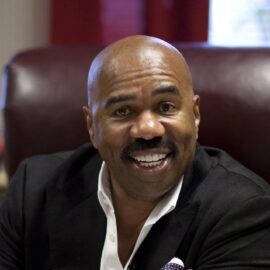

This article is an excerpt from the Shortform book guide to "Talk Like TED" by Carmine Gallo. Shortform has the world's best summaries and analyses of books you should be reading.
Like this article? Sign up for a free trial here .
Should you use storytelling in public speaking? Or is it better to play it safe and stick to facts and figures?
In public speaking, storytelling is an extremely powerful tool. Stories are much more likely to engage your audience than other types of information because this is how our minds make sense of the world around us.
Here are some tips on how to use storytelling in public speaking.
How to Incorporate Storytelling in Public Speaking
Storytelling in public speaking works on many levels. Stories are more easily comprehended than other types of sharing information. Stories are also more personable and engaging. There are three main ways to use storytelling in public speaking:
#1: Tell a story of your own life. For example, in a speech about your career, you could tell a story about the biggest challenge you’ve overcome so far. In a presentation about an amazing sale you recently made, you could tell the story of how you secured the deal.
#2: Tell someone else’s story. This “someone else” could be someone you know personally, a famous person, or a historical figure: anyone who’s had an experience that relates to the topic you’re discussing. For example, when giving a presentation to your colleagues about a new management style you’ve read about, you could tell the story of the person who created the management style and how it worked for them.
#3: Tell a story about a product or brand. In some situations, this may involve telling a story about a product or brand that you’ve created. For example, if you’re making a speech to launch your new product, you could tell your audience the story of how you came up with the product’s design.
Other scenarios may require you to tell a story about someone else’s product or brand. For instance, if you’re giving a presentation about why your marketing team should adopt a new brand strategy, you could tell them a story about how a competing brand successfully implemented the strategy.
The Importance of Storytelling in Public Speaking
Using storytelling in public speaking is important for four reasons. First, stories are much more likely to engage your audience than other methods of sharing information. For example, imagine you’re giving a speech to potential customers about the effectiveness of your new product. Telling a gripping story about how your product has already helped an important client will be much more exciting than listing statistics about the product’s efficacy.
Second, people are more likely to understand a concept if you tell them a story about how it works in the “real world.” For example, imagine you’re giving a presentation about a complicated new sales process that you’ve been testing out for a while, but that your team has yet to adopt. Your team members will probably understand the new process much quicker if, rather than bombarding them with the dry theory of how it works, you tell them a story about a sale you’ve made while using it. You can use your story to guide them through each step of the new process, thus illustrating how it works.
Third, stories can serve as “proof” that the claims you’re making are legitimate. For instance, if you’re making a sales pitch that details how great your new product or service is, potential customers will want to see evidence that backs up your claims before they become willing to part with their money. Real-life stories about how your product or service has already benefited customers will provide this evidence.
Finally, stories can influence your audience’s thoughts and emotions. Studies have shown that when people listen to a story, they experience identical brain function to the person telling the tale. For instance, if the storyteller experiences increased function in the area of the brain dedicated to emotion, so does the listener. This neurological connection allows speakers to “plant” certain ideas and emotions in their listeners’ minds. For example, if you want your audience to feel excited about a new product, tell a story that makes you feel excited about it. The audience’s brains will automatically mimic your emotion.
Make Your Story Gripping
Make your story exciting enough to keep your audience listening by incorporating these five attributes into the narrative:
1) Detail: Make the story so detail-rich that your listeners feel like they’re experiencing it themselves. They’ll become so immersed in the narrative that they can’t help but stick around to find out how it ends.
2) Unexpectedness: Make the story take a turn that the audience didn’t anticipate. For instance, you could tell what seems to be a story about how you designed an incredibly successful and innovative product, then suddenly reveal that the product failed. Unexpected twists like this shock people into paying attention to what you’re saying.
3) Mystery: Keep your story’s outcome unknown for a large portion of the narrative. People crave the closure of knowing how a story will end and will keep listening until you make the “big reveal.” Therefore, it’s in your interest to keep the story’s conclusion mysterious for as long as possible.
4) Heroes and villains: Give your audience some characters to root for and others to dislike. They’ll become engrossed in your story as they wait for the satisfaction of the hero triumphing and the villain getting their comeuppance. Your heroes and villains don’t necessarily have to be people: For example, the hero of your story could be your product, and the villain could be the issue that it tries to solve.
5) Adversity: Make sure that the main character of your story overcomes adversity at some point in the narrative. For example, they could start off in a difficult situation and then slowly improve their life. Alternatively, they could start off in a good place, lose everything, and then gain it back. Either way, your audience will be inspired by this battle against misfortune. They’ll keep listening to your story to find out whether the main character ultimately prevails.
Note that if you’ve included heroes and villains in your story, your example of triumph over adversity is ready-made: the hero finally defeating the villain.
TED Talk Example: Dan Ariely
In 2009, professor and author Dan Ariely gave a memorable TED talk on why people predictably and consistently make irrational decisions. He began his talk with a gripping personal story about his experience in a hospital burn unit.
As a teenager, Ariely suffered severe burns to 70% of his body. When the time came for the nurses to remove his bandages, they decided to rip them off quickly, theorizing that this would minimize his discomfort. Ariely begged the nurses to go slower, as he felt it would make the pain less intense. However, the nurses argued that since they were medically trained and Ariely wasn’t, they knew better than him. Years later, Ariely discovered that taking the bandages off slowly would have reduced the intensity of his pain. The nurses’ decision had been totally illogical—yet they’d persisted with it anyway.
Ariely’s story was effective at gripping his audience for two reasons. First, it was detailed—sometimes graphically so, especially when he described the different methods of removing bandages from burns. This immersed Ariely’s audience in his story, keeping them hooked until the very end.
Second, the big reveal of Ariely’s story—the fact that he was right and the nurses wrong—was unexpected. Most people would expect medical professionals to know more about the correct way to remove bandages than their patients. The fact they didn’t in this case shocked Ariely’s audience into paying attention to the rest of his talk.

———End of Preview———
Like what you just read? Read the rest of the world's best book summary and analysis of Carmine Gallo's "Talk Like TED" at Shortform .
Here's what you'll find in our full Talk Like TED summary :
- The 9 key principles to good public speaking
- How to apply the public speaking strategies of popular TED talks
- How storytelling enhances your appeal to audiences






